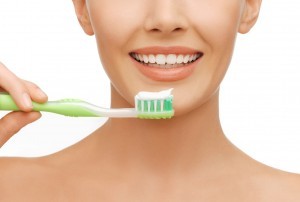When it all started, back in early 2020, it seemed like everything was about the hands. Masks were more necessary for frontline health care workers and first responders. So the only thing our mouths were doing was singing “Happy Birthday.” But as case numbers shot up, so did data, and all of it point to just how “aerosol” COVID transmission is.
All Mouths Matter
The activities known to spread SARS-CoV-2—speaking, breathing, coughing, sneezing, and even singing — all involve the mouth. About half of COVID-19 patients experience oral symptoms, including loss of taste, dry mouth, and mouth lesions. However, it wasn’t clear whether SARS-CoV-2 could directly infect and replicate in the mouth’s tissues. After months of study, the results suggested that infected oral cells play a bigger role in SARS-CoV-2 infection than previously thought. That’s because saliva infected by these cells might help infect the lungs when it is breathed in and the gut when it is swallowed.
Now, when it comes to managing contagious diseases, the only thing more important than understanding how one gets infected is how easy/hard it is to get infected. Researchers found that people with COVID-19 were most infectious in the period just before they developed symptoms. In fact, 53% of transmission in Hunan, China, happened during the presymptomatic phase of infection. And, research also showed that the length of time exposed to someone with the virus impacts the likelihood of getting the disease.
Translation? When you spend a lot of time around someone, your mouths are going to exchange a lot of air. And, most of the damage is happening when you don’t know it.
Clean Mouths Matter
It’s important to note that Hunan was able to slow transmission once they started quickly isolating COVID-19 cases and quarantining contacts. However, controlling epidemics solely with isolation and quarantine is not feasible, especially when you have a disease that takes days to become symptomatic (i.e., has a long incubation period). Community-wide measures like mask-wearing, increased telework, and restrictions on large gatherings must also be put in place to control spread, researchers say.
What do dentists say? Well, remember how doctors and scientists told us to wash our hands a lot more a lot longer? Same goes for your mouth. Dental wisdom has always said a good brushing at least twice a day and a thorough flossing at least once a day should be considered normal, quality care for your teeth. When in the midst of an aerosol pandemic, doubling up on that effort makes a lot of sense.
A study within the journal Oral Radiology notes that the mouth can act as an entry point for SARS-CoV-2 because cells in the tongue, gums, and teeth have special protein receptors that allow viruses to enter cells. In those with poor oral health, the presence of these particular receptors was higher.
In another study, researchers suggest that gum disease and changes in dental plaque correlate with an increased risk of complications from COVID-19. The thinking of whether there is a causal connection goes like this:
- A lack of oral hygiene can increase the chance of bacteria traveling from the mouth to the lungs.
- This may then increase the risk of developing a bacterial infection in addition to COVID-19.
Preventing cavities and spread
Obviously, when we work on your mouth during a pandemic or otherwise, you can’t wear a mask. But have you noticed we do, even in non-pandemic times? Hopefully, your concerns about contagiousness in dental offices have been allayed a bit as more information emerged in recent months. If not, you may want to deep dive a study out of Ohio State University published in the Journal of Dental Research.
“Getting your teeth cleaned does not increase your risk for COVID-19 infection any more than drinking a glass of water from the dentist’s office does,” said lead author of the study Purnima Kumar, professor of periodontology at Ohio State. “There is so much evidence emerging that if you have poor oral health, you are more susceptible to COVID.”








Leave a Reply